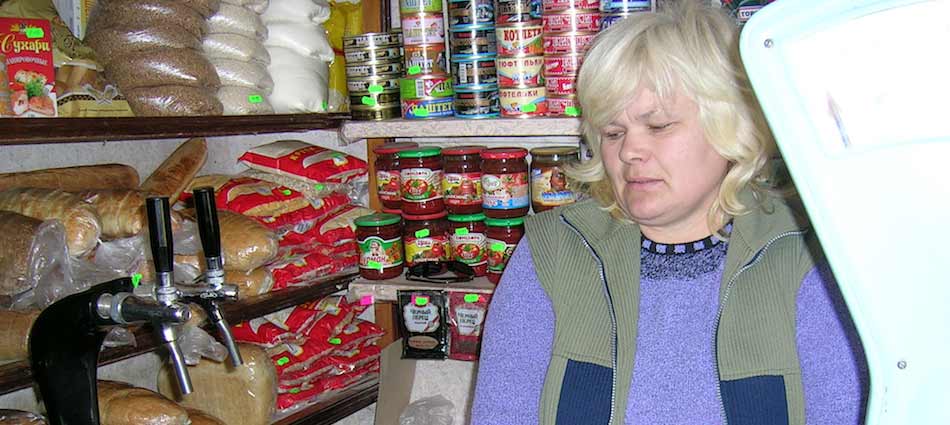
Arriving in Ukraine
The food kiosk at Yampoli, the tiny town facing Soroka across the Dniester River, provides lunch: an orange, brown bread and yellow cheese from Tulchin for the 100 mile drive to Vinnitsa. At Vinnitsa, we are to meet with an archivist trained to research Ukrainian Jews.The food seller, who agreed to have her picture taken, corresponds exactly to my image (OK, stereotype, blonde, blue eyes) of a Ukrainian peasant, which she no doubt was. Once we entered Ukraine, I felt a diminished sense of attachment (however manufactured). Because the only place name that had been meaningful to me as I contemplated the journey was Kishinev, and because my father always referred to Bessarabia and Russia–never Moldova or Ukraine–I was less fixated on finding something concrete that would link me symbolically to my “roots.” (In this belief, as it turned out, I was wrong.)
At the same time, because I had recently learned the place name of the Kipnis ancestral village–Bratslav–and had discovered that it had celebrated literary and religious origins: being home to the famous Hasidic storyteller, Nachman of Bratslav, I was eager to get there.